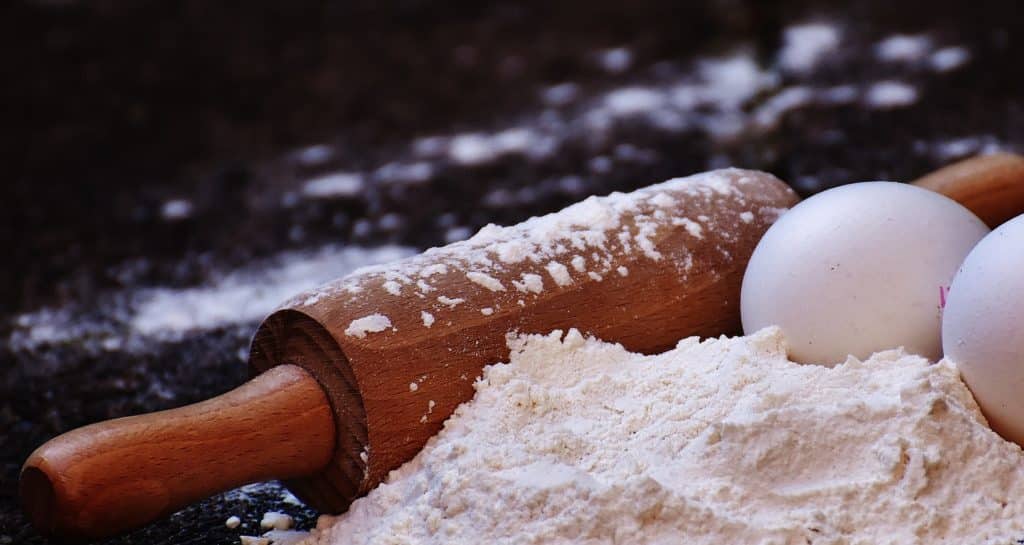
Super Easy Homemade Self Rising Flour

Homemade Self Rising Flour
A True Kitchen Workhorse

Without adding additional baking powder or salt, you can use homemade self rising flour to make favorites such as,
- pizza crust
- cuppa, cuppa, canna (A Personal Favorite)
- coffee cake
- cream biscuits
- cookies
- and more.
For those recipes that still need a little more lift, you can always add additional baking soda to the mix.
During my life, I've loved to cook for as long as I can remember. I've worked in numerous kitchens in every position, from bottle washer to head chef. Additionally, I've lived in the southwest, southeast, and northern midwest, so I've had the opportunity to experience a wide variety of foods, recipes, and cooking styles. I have to say, the differences in cooking methods in various regions of the country have always amazed me.
While it's available all over the country, my northern friends are far less likely to have self rising flour in their pantry. My southern friends would tend to ask, how the heck do you make fried chicken without self-rising flour? I have to admit I tend to lean southern on my personal cooking preferences.
Substituting Self-Rising Flour for All-Purpose Flour
Different brands of self-rising flour do vary slightly in the amount of leavening (baking powder) they add to their self-rising flour. In general, you can substitute self-rising flour right out of the bag for all-purpose flour in any recipe that calls for between, say, 1/2 teaspoon and 1 1/2 teaspoons per cup of flour.
If I'm using a store-bought brand, I will usually assume that it contains about 1 tsp per cup. That measure seems to work out pretty well when deciding if I need to add more.
That said, I do love the grab-and-go convenience of self-rising flour, but the variable from one brand to the next is one of the reasons I prefer to make mine rather than buy it.
Homemade Dry Mixes Save Time And Money

The truth is, whether you choose to start from scratch every single time or you choose the time-saving convenience of using homemade self rising flour, they both work. When you get used to having self-rising flour in your pantry, you'll find it very quick and convenient to use in your kitchen.
If you're going to use a store-bought brand, here are a few that get the Plum Cookin' Recommendation
You can make self-rising flour yourself. It's not difficult at all, but sadly, most of the recipes you'll find will only tell you how to make a cup or two when you're in a pinch.
Seriously, if you're going to take the time to make a cup or two, why on earth would you not just make a pound or two? Or five, for that matter?
All you need is a large bowl, a whisk, an air-tight container, and a couple of minutes. It works just as well, keeps just as well, and will probably cost you less to boot.
At the very least, you'll have a supply in the pantry when you need it, even if it's months down the line.
One big bonus to having self-rising flour on hand that no one ever mentions is that now, you have a mix you can build upon to create dozens of other ready-made dry mixes. Some great examples are,
- Preseasoned coating for fish
- Preseasoned coating for chicken
- All-purpose baking mix
- Buttermilk Biscuit Mix
- Pancake Mix
- Waffle Mix
- Hot Roll Mix
- Bread Mix
- All can be made by starting with self-rising flour as a base, to name just a few.
Once you find that perfect seasoning blend the whole family loves, turn it into a pre-made dry mix. The possibilities are endless, and the taste and consistency of your recipes will improve.
No need to spend extra money on a bag of self-rising flour. Make your own in just minutes.
- 8 cup all-purpose flour
- 4 tbsp baking powder
- 4 tsp salt
- Combine
Place all ingredients into a large mixing bowl or a stand mixer
- Mix
Whisk or mix until well blended.
- Store
Store in an airtight container in a cool dark place¼
Servings 30
- Amount Per Serving
- Calories 122kcal
- % Daily Value *
- Total Fat 1g2%
- Saturated Fat 1g5%
- Sodium 480mg20%
- Potassium 36mg2%
- Total Carbohydrate 26g9%
- Dietary Fiber 1g4%
- Sugars 1g
- Protein 3g6%
- Calcium 99 mg
- Iron 2 mg
* Percent Daily Values are based on a 2,000 calorie diet. Your daily value may be higher or lower depending on your calorie needs.
Stored properly, the mix will keep for at least a year
Use just the same as you would any quality self-rising flout purchased from the store


